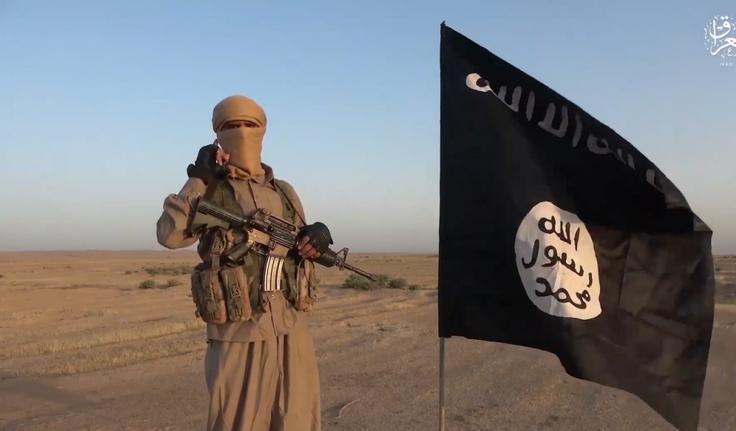
The Islamic State After the “Caliphate”: Still Remaining and Expanding
Four years ago this month, the Islamic State’s (ISIS) “caliphate” was finally destroyed with the fall of the village of Baghuz in eastern Syria. The restoration of the caliphate had been announced five years earlier, in June 2014, and days later the then-caliph, Abu Bakr al-Baghdadi, had appeared at the Nuri Mosque in Mosul to publicly lay claim to his new realm. Six months after the Battle of Baghuz, Al-Baghdadi was dead, and since then two of his successors have been killed. ISIS has controlled no cities since 2019 and in ISIS’s heartland, in Iraq and Syria, the group has been driven out into the deserts. But this has not been the end of the group. While ISIS’s wave of global terrorist attacks has diminished, albeit far from stopping, the group has been reviving and expanding, even at the Centre.
This week, Aaron Zelin at The Washington Institute unveiled an interactive mapping tool, the “Islamic State Select Worldwide Activity Map”, which documents not only ISIS’s attacks since August 2021, but its media output, the sanctions imposed on its leaders and business entities, and the legal cases against ISIS operatives around the world. As Zelin described in launching this project, the purpose is to try to avoid a repeat of what happened last time. As late as 2013, government officials and analysts—even those closely tracking the Islamic State movement—believed the “Surge” and “Sahwa” (Awakening) of 2007-08 had defeated the group, and its remaining activities were containable. Months later, ISIS had control of a territory larger than Great Britain and had demolished the border between two internationally-recognised states.
ISIS has continued a steady tempo of attacks at the Centre, in Iraq and Syria. A lot of these are guerrilla attacks on security forces, especially in Iraq, where the regular army is targeted regularly and the ongoing presence in Sunni areas of Iran’s sectarian proxy militias, the Hashd al-Shabi, provides ISIS a lot of passive support and political fuel to recruit. In Syria, ISIS has over the last year paid particular attention to attacks on truffle farmers, one of the few economic opportunities in the areas controlled by the Iran-dependent Bashar al-Assad regime. ISIS has also carried out more spectacular attacks in Syria, notably against the prisons that hold ISIS’s most hardened fighters in the area controlled by the U.S.-supported Kurdish militants. This long attritional warfare, combined with releasing key operatives from prison and securing local cooperation through terror and inducement, was crucial to ISIS’s revival last time.
Outside of the Centre, ISIS has made rapid advances in Africa. The Sahel region has proven to be a particular hotspot for ISIS. In Nigeria, ISIS re-established control over its renegade “Boko Haram” branch in the spring of 2021 and fought the Nigerian government to a standstill, retaining control of swathes of territory in the north and using the zone as a launchpad for attacks elsewhere in the country, against Christian civilians and security forces. In the other Sahelian states like Mali, Niger, and Burkina Faso, ISIS’s record is more mixed, since it operates in competition with Al-Qaeda, but the jihadists have been handed the advantage of France withdrawing its capable military forces and being replaced by Russia’s incompetent “Wagner” and other units. In Sub-Saharan Africa—in Somalia, the Congo, and Mozambique—ISIS has established footholds and continues expanding them. The chronic problems in the hemisphere, from a lack of effective state capacity to ethnic favouritism and hostilities to insufficient counter-extremism infrastructure, suggest that ISIS will continue to find Africa a congenial environment to operate in.
The other major zone of activity for ISIS outside the Centre has been Afghanistan and South Asia more broadly. The fall of Afghanistan to the Taliban and Al-Qaeda in August 2021 when the U.S. and the rest of NATO chose to leave has left the country under a de facto government whose cruelty is matched only by its lack of ability. The Afghan economy is in tatters and the Taliban regime’s security capacity is feeble, despite ongoing large-scale support from Pakistan and more indirect support from states like China. A lot of ISIS prisoners were, as had been predicted, broken free as the Republic collapsed, and in the new situation since 2021 ISIS has surged, regularly staging operations across the border in Pakistan and with clear eyes on India, albeit rather underwhelming in practice so far. Given that ISIS has used its presence in Afghanistan for global terrorist attacks in the past, this is a highly dangerous and concerning situation.
The news cycle at the present time moves very quickly, but as the events of 2013-14 show it is important not to lose sight of ISIS in its rebuilding phases. European Eye on Radicalization has been following closely the concentration of ISIS’s leadership in Syria, the group’s progress in Africa, and in Afghanistan. History tells us that a major surge on any or all of these fronts could occur at short notice.
Source: eeradicalization





